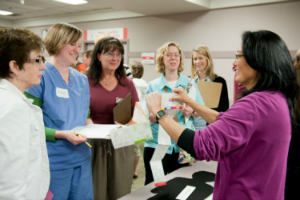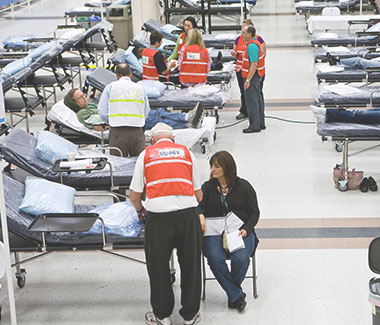

The Challenge
At least 25% of the population of the state of Washington is a pediatric patient, specifically under the age of 18. At a time when pediatric and adult hospital resources were already limited, the country was faced with a collision of respiratory syncytial virus (RSV), influenza and coronavirus in our pediatric population, a pediatric “triple-demic”. Pediatric patients have specific care needs and there are limited resources within Washington state. The Network needed to work with our partners to ensure our state could sustain and maximize pediatric care during a crisis and surge.
Background
The Northwest Healthcare Response Network (the Network) has a long history of focus on pediatric disaster readiness and over the years has been building and investing in tools, trainings, and relationships amongst Washington state pediatric providers.
The Network has led a variety of pediatric planning and training initiatives for more than a decade. This includes establishing a dedicated pediatric workgroup, composed of subject matter experts and providers from across the region who have worked together on pediatric disaster readiness for many years. This became critical during the early days of COVID, when the Network expanded their pediatric surge work group membership and continued to meet on a regular basis to exchange information and begin to collaborate on efforts in Washington.
Creating a common operating picture leads to new capabilities
The pediatric work group’s effort focused first on creating a common operating picture so that providers could have a shared understanding of pediatric capacity and needs. This resulted in developing new tools to share situational awareness because the existing systems within the state were not meeting the need of pediatric providers during the initial months of COVID. This collective need was met with an initial effort to create a rudimentary spreadsheet to track more specific pediatric focused data on bed capacity information. As the value of this information became more evident, the Network convened and coordinated a group of subject matter experts in Fall 2021 to build out the functionality to track pediatric bed availability on WATrac. This enhanced information sharing was not only key for addressing potential capacity issues, but also for providers to begin to assess trends.
As things evolved in the summer of 2022, providers began to see the increasing impacts on pediatric capacity during an early RSV wave. The data this team of clinical subject matter experts was tracking and discussing on a regular basis began to cause alarm amongst providers. Dr. Mary King, UW-Medicine Harborview Medical Center Pediatric Intensive Care Unit (PICU) Director shared, “Without that forum for data and communication, we would not have recognized the urgency of the situation. We knew both quantitatively and qualitatively that something was changing this fall [2022].”
These trends prompted the Network to lead the just-in-time development of a critical new pediatric capability within the Washington Medical Coordination Center (WMCC) in November 2022. This new capability ensured that children needing critical life saving services were able to receive the right level of care at the right time across the state. This was vital given the limited number of pediatric resources in Washington, such as Pediatric Intensive Care Unit beds. The integration of pediatric capabilities within the WMCC also provided expanded knowledge to enhance situational awareness around pediatric capacity and needs.
“The Network was able to leverage their relationships and the processes that had been undertaken for adult patients at the WMCC to build and layer in the pediatric relationships in a rapid process to bring together hospital leaders and stakeholders. This allowed for the expanded capacity to meet the needs of clinicians across the state. Without a doubt, the addition of the pediatric functionality to the WMCC saved lives.” – Dr. Mary King, UW-Medicine Harborview Medical Center
Click here to view the entire impact story.
returnOther Impact Stories



Impact Focus:
Multi-Agency Coordination
Ensuring Capacity...
The Challenge At least 25% of the population of the state of Washington is a pediatric patient, specifically under the… Read more »


Impact Focus:
Evacuation
Partnerships and...
Challenge: Relocating 77 vulnerable residents from a skilled nursing facility in rural Washington during a fire evacuation emergency. Montesano, Washington… Read more »


Impact Focus:
Situational Awareness
Extreme Heat...
The Network spearheads coordination and collaboration to save lives during an extreme heat response. In late June 2021, amidst a… Read more »
